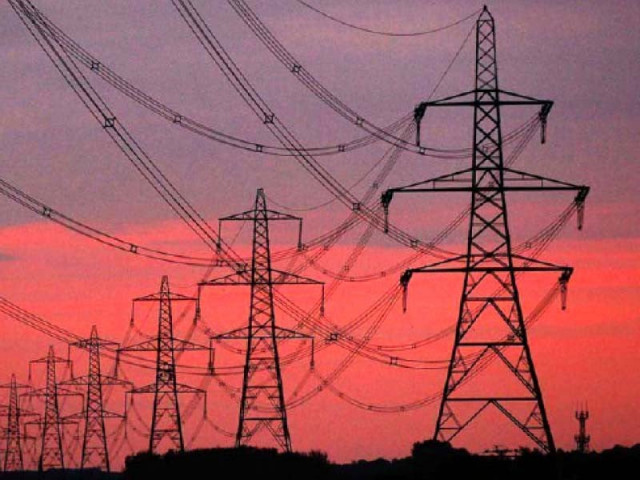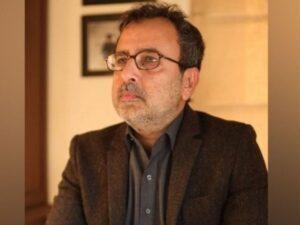ISLAMABAD:
Prime Minister Shehbaz Sharif on Thursday announced a new electricity pricing plan for industrial and agricultural consumers, fixing the rate at Rs 23 per unit on a cost-plus method, without subsidy. However, the benefit will only apply to 25% additional consumption compared to the previous year.
According to those responsible for negotiations with the International Monetary Fund (IMF), the lender imposed strict conditions on both the use and duration of the program. The “Roshan Maeeshat Electricity Package” will remain in force for three years without any renewal option.
The reduced tariff will expire if combined industrial and agricultural demand does not exceed the baseline level of 42.9 billion units or exceeds 53.7 billion units, the cap set for a 25% increase in consumption in the first year.
Announcing the package at a meeting with representatives of industry, agriculture and business, the Prime Minister said the electricity tariff for industrial consumers has been reduced by Rs 34 to Rs 22.98 per unit, a reduction of Rs 11 per unit or 32.4 per cent.
Similarly, for agricultural consumers, the price has been reduced by Rs 38 to Rs 22.98 per unit, a reduction of Rs 15 or 39.5 per cent.
Federal Minister for Power, Sardar Awais Leghari, while speaking to The Express PK Press Club, explained that the additional 25% usage would be calculated
based on the collective consumption of all users, and not individually. According to him, this allows some flexibility for individual consumers as long as total demand remains within the 25% limit set for the two sectors.
Pakistan’s electricity demand from the national grid fell 9 percent to 96.2 billion units in the last fiscal year as rising prices forced consumers to avoid the national grid. The deteriorating trend also continued this fiscal year and demand declined further to just 10.5 billion units in July, a reduction of 6% from last year’s lower base.
To boost demand, the government has come up with an electricity scheme, in which it does not provide any subsidies but still charges about 5 rupees per unit more than the cost of power, according to government sources. The price reduction is made by excluding capacity payment costs from the invoice, which will always remain applicable to consumption below the reference and above the 25% threshold.
“From November 2025 to October 2028, additional electricity will be supplied to the industrial and agricultural sectors throughout the year at the rate of Rs 22.98 per unit,” the Prime Minister said. He added that the burden of electricity supplied under this package will not fall on domestic consumers or any other sector.
According to the work of the Energy Division, which became the basis for setting prices and maximum thresholds, the basic consumption for industrial and agricultural consumers is 42.9 billion units for the year 2026 and the relief will be available on the maximum of 10.7 billion additional consumption for the full year.
For the year 2027, the basic demand is calculated at 44 billion units and the reduced rates will be applicable on additional consumption of 11 billion units. For the year 2028, baseline demand is estimated at 45.4 billion units and relief will be available at 11.4 billion units.
“The development of industry and agriculture is vital for the growth of the national economy and the creation of employment opportunities,” the Prime Minister said. “We are taking all possible measures to strengthen the competitiveness of Pakistan’s industries and agricultural sector in the region and to improve the ease of doing business,” Shehbaz Sharif said.
The Power Minister said that in the case of new consumers having no consumption history, the differential tariff rate will be applicable on half of the sanctioned load and the rest of the half will be charged at Rs34 per unit.
The government has estimated that cost plus price can safely add 600 to 1,000 megawatts of consumption to the national grid. This will help reduce the risk of power outages through better use of the network and stabilize tariffs through better recovery of fixed costs.
The government expects that the PM package could increase industrial growth by 0.5% annually and add another Rs 21 billion to the national exchequer in the form of higher tax collection on increased consumption.
IMF Limits
The sources said the Energy Division shared the package with the IMF for approval, which set the conditions for continuation and the basis for termination.
Pakistan was informed that it would not set different electricity rates for specific industries and that all industries would pay a uniform rate.
The normal rate of Rs34 per unit will apply if consumption growth is below the differential threshold and also if it exceeds 25% above the baseline consumption.
The program is due to end within three years and the government will not seek renewal, the sources said. However, if the tariff price increases above the announced rate of Rs23 per unit in the two consecutive half-yearly reviews, the rates will be revised accordingly, the sources said.
The energy minister told The Express PK Press Club that the government would conduct biannual reviews of the prime minister’s project to ensure the cost remains within the estimated 25 per cent threshold.
The sources said the IMF had informed Pakistan that any loss due to revenue not keeping up with customs duties would automatically lead to hike in customs duties on industry and agriculture.
Additionally, the industrial and agricultural sectors will not be entitled to relief under a negative fuel price adjustment on additional consumption, but they will still be subject to a higher fuel cost for the additional consumption.
Solar factor
The government has announced a reduction in electricity tariff up to Rs 7.6 per unit for industrial and agricultural consumers for phased usage with the aim of utilizing 7,000 MW of surplus power and stopping consumers’ shift to solar energy.
The government will take electricity consumption in 2024 as a reference and reductions will be granted on additional electricity consumption.
It announced three packages for additional electricity consumption of 25 percent, 50 percent then 100 percent.
In Pakistan, almost 90 percent of consumers have switched to solarization. The Division of Energy struggled to twice change the solar net metering policy to stop the shift of consumers to solar.
The country is also facing LNG sector utilization issues as the power sector is not ready to transport the committed volume of LNG.
Even the government had approved a relief plan by reducing LNG purchase guarantees from 60 to 50 percent. The Minister of Oil protested against this decision and described this decision as a glut of gas.
Due to a gas glut, the government has contacted Qatar to divert LNG cargoes due to low demand for LNG in the power sector. The recent plan to increase electricity usage will also help manage the glut in the gas sector as demand for LNG in the power sector will increase due to increased electricity consumption.
Net solar metering and off-grid solarization in the agricultural and industrial sectors is also another reason that has led to the low demand for electricity.
The power division had struggled to change the solar net metering policy, but the prime minister had refused to approve the policy to avoid political backlash and mass resentment.
Leghari said more than 7,000 megawatts of excess electricity remain unused in our national power system.
When the full price proved too expensive, we decided to make it affordable,” Leghari said, adding that the average cost of electricity for both sectors would come down.
Currently, consumers pay capacity payments worth billions of rupees for electricity that is not used. The additional consumption of 7,000 MW of electricity will also reduce the capacity burden on honest consumers who pay their bills.




